Foot pain may be solved by fat
Do you ever wish your feet were just a little … fatter? If you’re suffering from plantar fasciitis pain, you soon might be. Notorious for being one of the most widespread causes of foot pain,...
Update your location to show providers, locations, and services closest to you.
Pain or discomfort can be felt anywhere in the foot. You may have pain in the heel, toes, arch, instep, or bottom of foot (sole).
Pain - foot
Foot pain may be due to:
The following can cause foot pain:
The following steps may help relieve your foot pain:
Other home care steps depend on what is causing your foot pain.
The following steps can prevent foot problems and foot pain:
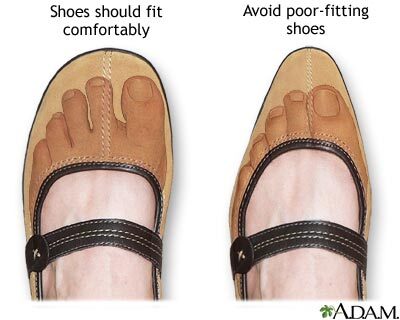
Contact your provider if:
Your provider will do a physical exam. Your provider will ask questions about your symptoms and medical history.
X-rays or MRI may be done to help your doctor diagnose the cause of your foot pain.
Treatment depends on the exact cause of the foot pain. Treatment may include:
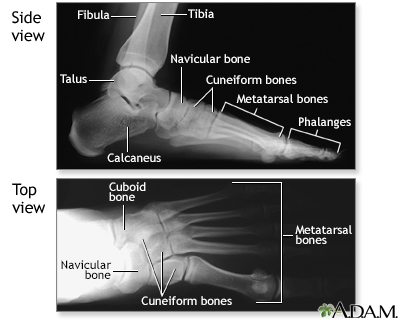
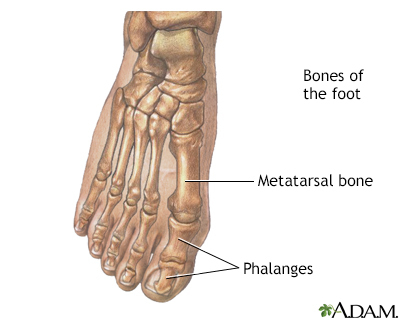

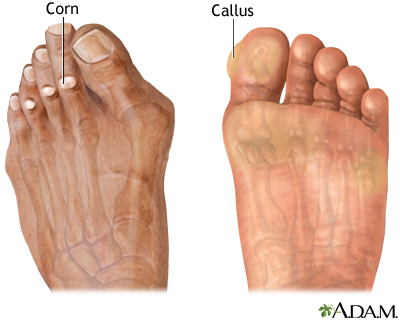
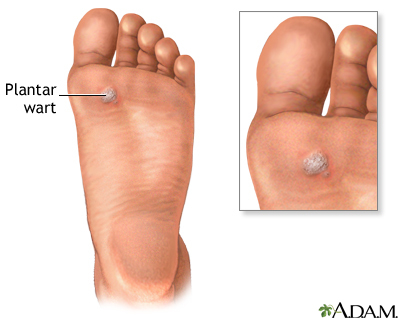
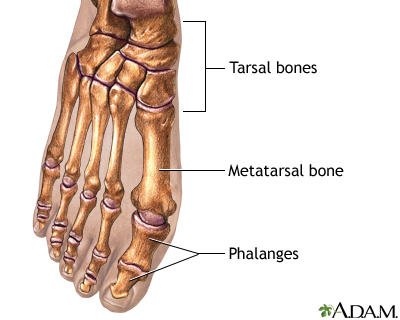
Chiodo CP, Price MD, Sangeorzan AP. Foot and ankle pain. In: Firestein GS, Budd RC, Gabriel SE, Koretzky GA, McInnes IB, O'Dell JR, eds. Firestein & Kelly's Textbook of Rheumatology. 11th ed. Philadelphia, PA: Elsevier; 2021:chap 52.
Grear BJ. Disorders of tendons and fascia and adolescent and adult pes planus. In: Azar FM, Beaty JH, eds. Campbell's Operative Orthopaedics. 14th ed. Philadelphia, PA: Elsevier; 2021:chap 83.
Hickey B, Mason L, Perera A. Forefoot problems in sport. In: Miller MD, Thompson SR, eds. DeLee, Drez, & Miller's Orthopaedic Sports Medicine. 5th ed. Philadelphia, PA: Elsevier; 2020:chap 121.
Kadakia AR, Aiyer AA. Heel pain and plantar fasciitis: hindfoot conditions. In: Miller MD, Thompson SR, eds. DeLee, Drez, & Miller's Orthopaedic Sports Medicine. 5th ed. Philadelphia, PA: Elsevier; 2020:chap 120.
Rothenberg P, Swanton E, Molloy A, Aiyer AA, Kaplan JR. Ligamentous injuries of the foot and ankle. In: Miller MD, Thompson SR, eds. DeLee, Drez, & Miller's Orthopaedic Sports Medicine. 5th ed. Philadelphia, PA: Elsevier; 2020:chap 117.




Our community and patient programs provide great value to patients, families and loved ones. People can find support, educational materials, expert consultants and more. In most instances, these programs are offered free of charge.
Helps individuals with chronic musculoskeletal pain understand why they feel so much pain, and seeks ways to improve their lives.
Do you ever wish your feet were just a little … fatter? If you’re suffering from plantar fasciitis pain, you soon might be. Notorious for being one of the most widespread causes of foot pain,...